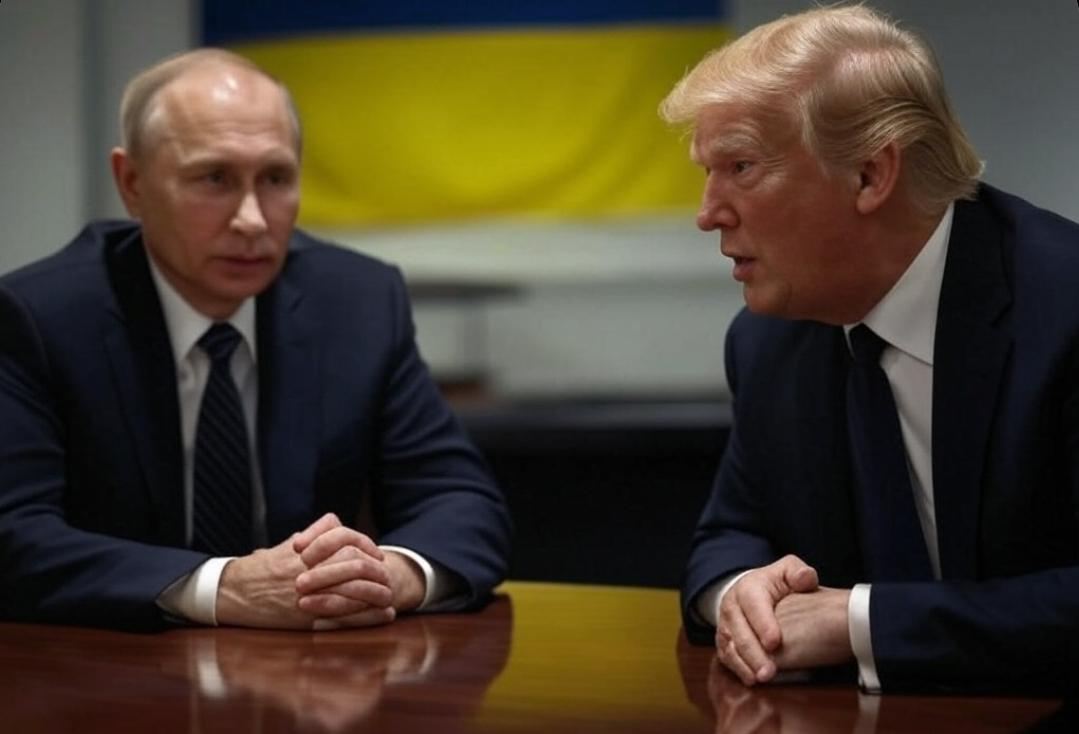
In a dramatic reversal of U.S. foreign policy, President Donald Trump has shifted gears on the Russia-Ukraine conflict, pivoting away from the unwavering support for Ukraine that defined Joe Biden’s tenure. Where Biden once championed Ukraine’s fight against Russia—including its long-held dream of NATO membership—Trump now seems more inclined to handshake Vladimir Putin than arm Kyiv. As of February 26, 2025, this about-face, particularly on NATO, has left Ukraine reeling, Europe scrambling, and the world questioning: why is Trump siding with Putin over a once-cherished ally?
Biden’s Legacy: A Lifeline for Ukraine—and NATO Hopes
When Russia invaded Ukraine in February 2022, Biden didn’t just send weapons—he sent a message. The U.S. became Ukraine’s biggest backer, funneling over $65 billion in aid by early 2025, from long-range missiles to tanks. Beyond the hardware, Biden threw his weight behind Ukraine’s NATO aspirations, calling it a “moral imperative” to integrate Kyiv into the Western alliance. At NATO summits, he pushed allies to keep the door open, framing it as a bulwark against Russian expansionism. For Ukraine’s President Volodymyr Zelensky, this was more than rhetoric—it was a promise of security and a seat at the table.
Biden’s stance wasn’t without friction. Russia saw Ukraine’s NATO bid as a red line, and even some U.S. allies hesitated. But Biden held firm, insisting that supporting Ukraine’s membership was part of defending democracy itself. By late 2024, Ukraine had made strides toward candidacy, buoyed by American resolve.
Trump’s Turn: Slamming the NATO Door Shut
Enter Trump in 2025, and the tune has changed—fast. Since retaking the White House, he’s not only dialed back military aid but slammed the brakes on Ukraine’s NATO dreams. In a February 13 phone call with Putin, Trump hinted at a deal that would nix Ukraine’s membership bid entirely, echoing Moscow’s long-standing demand. Defense Secretary Pete Hegseth doubled down days later, calling NATO expansion “a relic of the Cold War” and Ukraine’s inclusion “off the table.” This isn’t just a policy tweak—it’s a gut punch to Kyiv’s strategic goals.
Trump’s team has leaned into this shift hard. Special envoy Richard Grenell, speaking at CPAC on February 22, argued, “We’re not here to provoke Russia with NATO fantasies—we’re here to make peace.” That same week, Trump himself took a jab at Zelensky, sneering, “He wants NATO, but he can’t even hold an election.” The message is clear: Ukraine’s NATO ambitions, once nurtured by Biden, are now dead in the water under Trump.
Why the Shift? NATO’s Role in Trump’s Calculus
What’s behind this pivot—and the NATO snub in particular? Two pieces fit the puzzle.
First, Trump’s chummy vibe with Putin is no secret. He’s called the Russian leader “smart” and “a genius” for years, and their February 2025 talks—complete with mutual visit invites—show a bond Biden never chased. Ditching Ukraine’s NATO bid looks like a sweetener for Putin, who’s long viewed the alliance’s eastward creep as an existential threat. Trump seems to see this concession as a bargaining chip, not a betrayal.
Second, “America First” is back with a vengeance. Trump has railed against NATO itself, once calling it “obsolete,” and he’s loath to spend U.S. resources on what he calls “Europe’s backyard squabbles.” At a rally on February 18, he grumbled, “Why are we bankrolling Ukraine’s NATO pipe dream when our own borders are a mess?” For Trump, Ukraine’s membership isn’t a priority—it’s a liability.
The Fallout: Ukraine’s NATO Dream Fades
For Ukraine, this is a body blow. NATO membership wasn’t just a goal—it was a lifeline against future Russian aggression. Zelensky, blindsided by Trump’s talks with Putin, fumed on February 20, “We fought for NATO, not for handouts.” Now, with the U.S. pulling the plug, Ukraine’s path to the alliance looks bleak. European allies, like France and Poland, vow to keep pushing, but without American muscle, their leverage is thin.
Europe’s rattled too. Excluded from Trump’s Saudi-hosted Russia talks, leaders like Germany’s Annalena Baerbock insist Ukraine’s NATO future can’t be bartered away. But with Trump and Putin calling the shots, the EU’s voice feels like a whisper. Kaja Kallas, the EU’s foreign policy chief, warned on February 13 that abandoning Ukraine’s membership risks “a new iron curtain.”
As February 2025 wraps, Trump’s playbook is taking shape: deal with Putin, ditch Ukraine’s NATO bid, and let Europe figure out the rest. Whether this stems from admiration, pragmatism, or a hunger for headlines, it’s a far cry from Biden’s vision. The question now is whether Trump can coax Putin into a deal—or if Putin, smelling blood, will exploit America’s retreat to tighten his grip.
Disclaimer
The views and analysis in this article are based on current events and public statements as of February 26, 2025. They reflect the author’s interpretation and are not intended as an official statement of policy or fact. Geopolitical situations evolve rapidly, and readers are encouraged to consult multiple sources for a full picture




